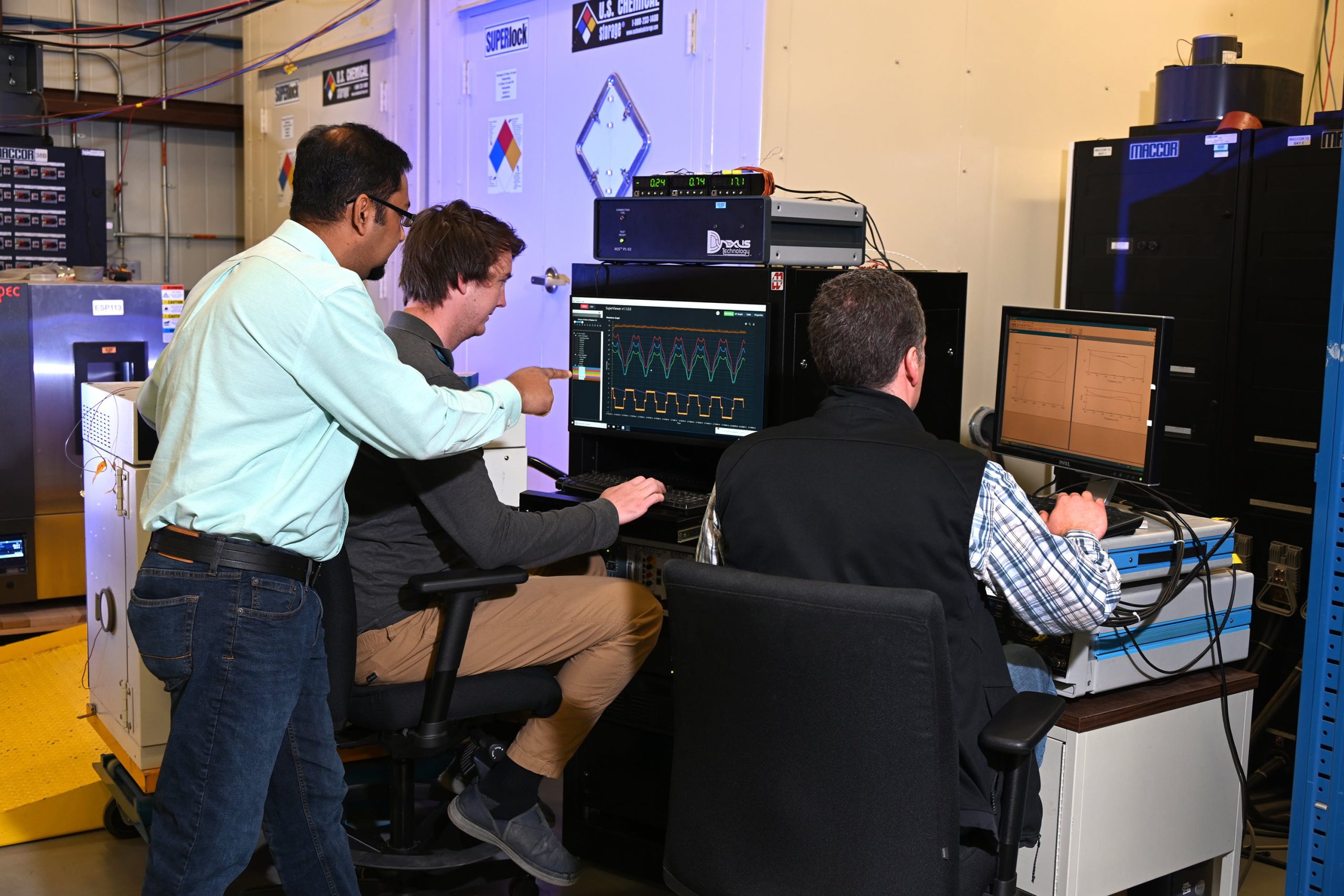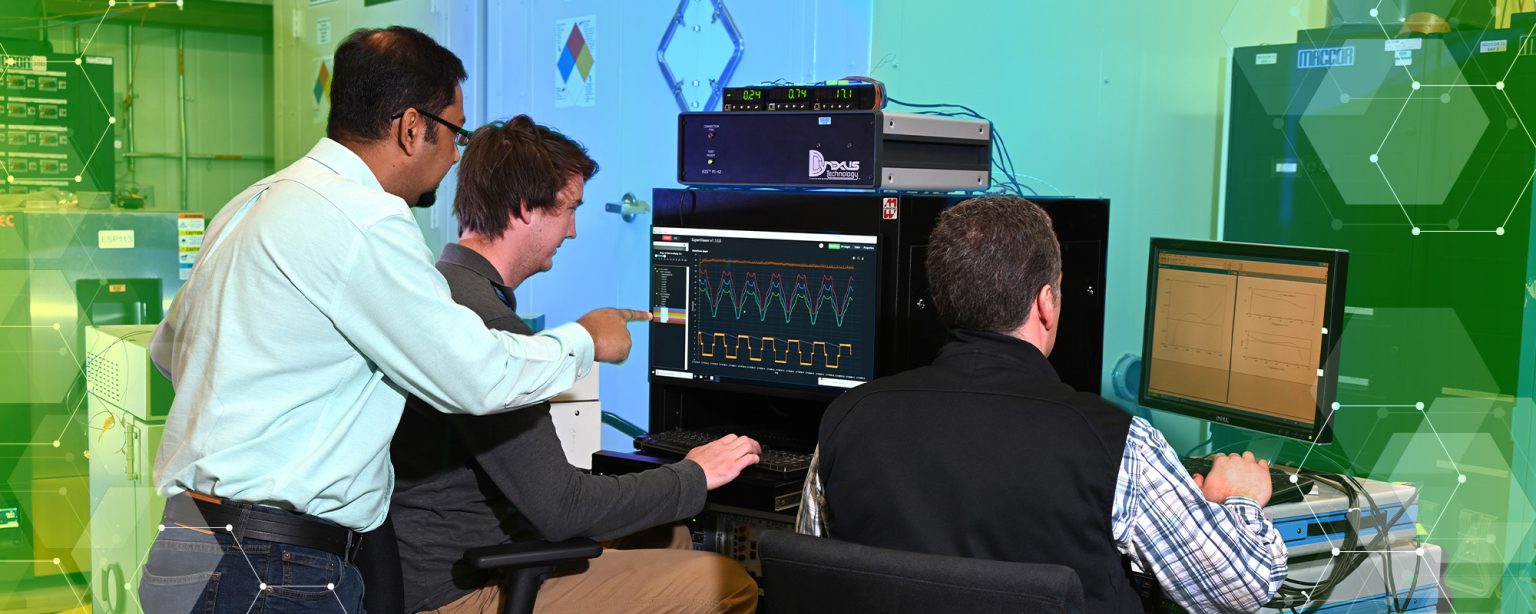The race to a net-zero future is gaining speed, and Idaho National Laboratory (INL) researchers are at the forefront. Smoothly deploying electric vehicle technology is an essential step to crossing the finish line. In 2020, transportation accounted for 27% of total carbon dioxide emissions in the United States. While not attributable to cars alone, this percentage could see a significant decrease with a transition to electric vehicles.
Although electric vehicles provide a reliable and effective solution to the growing carbon emissions problem, some drivers question their safety.
INL researchers are addressing electric vehicle battery safety concerns with the recently deployed Battery Advanced DiaGnostics Evaluation (BADGE) platform.
“The platform allows industry, university and government partners to directly compare management and diagnostics technologies and their abilities to detect potential safety risks,” said Tanvir Tanim, group lead for the Energy Storage Technology Group and principal investigator on the project. “The goal is to determine which tests are most accurate, ensuring the most reliable safety metrics for electric vehicle batteries.”
Understanding possible safety issues
Many factors affect conventional lithium-ion battery safety. Some of the main contributors are lithium plating, stranded energy, sensor and control accuracy and resiliency issues, and unique aging characteristics.
Extreme fast charging is one way to alleviate concerns about charging time, which currently hinders electric vehicle adoption. However, the high charging rates increase the likelihood of lithium plating. During high-rate charging, lithium ions are more prone to deposit highly reactive lithium metal on the surface of the anode – a phenomenon known as lithium plating. This causes battery performance to deteriorate, leading to numerous safety implications.
Stranded energy in electric vehicles is another concern for not only end users but also first responders. Stranded energy refers to energy remaining in an electric vehicle battery following a wreck, whether a minor fender bender or a more serious collision. Often, the amount of energy remaining in the battery is unknown, creating risks for both consumers and first responders.
BADGE plays a key role in providing relevant information about these battery safety concerns, which could then be used to develop guidelines for safely handling stranded energy and early detection of lithium plating.
Addressing possible safety issues
Efforts are already in place to develop technologies that can detect the earliest signs of performance and safety issues. INL’s BADGE platform differs from other diagnostic technology in that it quickly verifies that the data collected by new technologies is accurate and reliable. Co-principal investigator on the project Lee Walker said, “Many of the current technologies that are used to detect safety issues are slow, expensive and destructive to the battery. BADGE allows us to independently evaluate new diagnostic technologies against known standards.”
The BADGE platform will also play a key role in supporting emerging management and diagnostic technologies. The data made available by BADGE offers the information needed by individual technology developers to advance their product toward commercial use and adoption.

The BADGE platform stands out from other verification methods in its ability to configure to specific diagnostic technologies and its compatibility with many electric vehicle communication protocols, all within a single platform. The platform also enables multiple complementary tools to be used at once, increasing the ability for early fault detection.
“BADGE allows developers to compare and verify the validity of new diagnostic technologies in real-time environments,” Tanim said.
Testing safety diagnostic technology in real time provides researchers and industry the ability to see how conditions change instantly, rather than in retrospect. This takes the guess work out of identifying the data’s cause or origin. The BADGE platform not only verifies a technology’s diagnostic abilities, but also evaluates them against those of similar technologies to ensure that the best options are available for use in electric vehicles.
BADGE platform today
Recognizing the importance of emerging diagnostics technologies to electric vehicle battery safety, the National Highway Traffic Safety Administration funds the BADGE platform. INL also collaborates with industry partners and universities.
The BADGE platform provides the ability to characterize tools during normal battery use and under more aggressive, major fault scenarios. Major fault conditions include improper use or management, or physical damage to the battery after a collision. Sandia National Laboratories is equipped with major fault testing capabilities and will be running tests using the BADGE platform to confirm diagnostic technologies’ performance in those conditions in parallel with INL characterization during more normal conditions.
Long-term improvements to battery safety
Increased need for electric vehicle availability brings increased need for battery safety testing. But unlike gas powered vehicles, electric vehicles don’t have years to prove their viability as a transportation method. Instead, they will rely on advanced hardware and analysis technologies like the BADGE platform to prove their worth and help the world safely reach a net-zero future.
“The BADGE platform takes safety one step further by verifying that the safety technology used in electric vehicles functions at the highest possible accuracy,” said Tanim. “With BADGE verifying safety metrics, electric vehicles will increase in reliability, ensuring their place inside the average person’s garage.”





